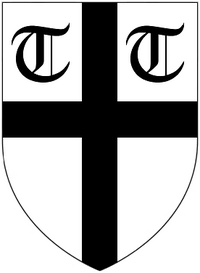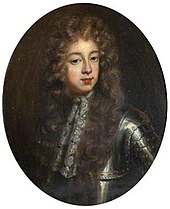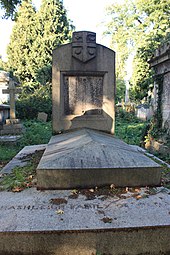

Rashleigh is a surname of a prominent family from Cornwall and Devon in south western Britain, which originated in the 14th century or before at the estate of Rashleigh in the parish of Wembworthy, Devon. The principal branches were:
- Rashleigh of Rashleigh, Devon
- Rashleigh of Barnstaple, North Devon
- Rashleigh of South Molton, North Devon
- Rashleigh of Fowey, Cornwall
- Rashleigh of Menabilly, Tywardreath, near Fowey
- Rashleigh of Coombe, Fowey
The Rashleighs of Fowey and Menabilly were powerful merchants in the time of Henry VIII and Elizabeth I. Philip Rashleigh, younger son of a family from Barnstaple in Devon, had purchased the manor of Trenant close to Fowey from the king after the dissolution of the monasteries in 1545. He went into trade, became successful but died in 1551. His two sons Robert and John founded the fortunes of the Fowey Rashleighs and their pedigree has been well documented.
Notable Rashleigh family members

- Charles Rashleigh
Charles Rashleigh (died 1823) was an entrepreneur. The expanding mining industry around West Polmear led him to develop Charlestown, Cornwall on the south coast as a port, which was named Charlestown after him.
- Harold St. James Rashleigh-Berry
Rashleigh-Berry was Lt. Col in the British Army stationed in Peshawar, British Indian Empire. Rashleigh-Berry participated in the Second Anglo-Afghan War, under Sir Frederick Roberts.
- John Rashleigh (1554–1624, Founder of Menabilly)
John Rashleigh (1554–1624) was an English merchant and Member of Parliament. He was the father of Jonathon Rashleigh and grandfather of John Rashleigh. John Rashleigh was the son of Phillip Rashleigh, a merchant, shipowner and landowner from Barnstaple. Phillip was himself the son of owner of the Rashleigh-Barton estate located in Devon which has been known to exist since 1196. After his father Phillip Rashleigh purchased the manor of Trenant in 1545, Phillip moved his family from Devon to Cornwall to take advantage of the dissolution of the monasteries by buying and re-selling the land acquired around Fowey, it was from this land that John Rashleigh commenced building Menabilly from land acquired in Fowey (from which Menabilly was later completed in its construction by his son Jonathan).
- Jonathan Rashleigh (1591–1675)
Jonathan Rashleigh (4 July 1591 – 1 May 1675) was an English merchant and politician who sat in the House of Commons at various times between 1614 and 1675. He supported the Royalist cause during the English Civil War. Jonathan was also responsible for completing the construction of the family home of Menabilly.
- John Rashleigh (1619–1693)
John Rashleigh (21 January 1619 – 13 March 1693) was an English politician who sat in the House of Commons from 1661 to 1679. He was the son of Jonathan Rashleigh and the grandson of John Rashleigh (the merchant and MP).
- Jonathan Rashleigh (1642–1702)
This Jonathan Rashleigh (see painting to the right) was also based in Menabilly and was the Sheriff of Cornwall in 1687. He was the grandson of Jonathan Rashleigh the merchant and House of Commons politician.
- Philip Rashleigh (1729–1811)
Philip Rashleigh (1729–1811) was a Cornish mineral expert and Member of Parliament for Fowey.
Menabilly Estate

In the Return of Owners of Land, 1873, Mr Jonathan Rashleigh of Menabilly Estate, Par, was listed as the largest landowner in Cornwall with an estate of 30,156 acres (122 km), or 3.97% of the total area of Cornwall. The estate contains pleasure grounds and a large country house which was Daphne du Maurier's inspiration for the house Manderley in her novel Rebecca.
Sources
- Vivian, J.L. & Drake, H.H., The Visitation of the County of Cornwall in the year 1620, Harleian Society, 1st series, volume 9, London, 1874, p9.183-4, pedigree of Rashleigh
- Marshall, James C., Devon Notes & Queries, Volume IV Part VI, Exeter, April 1907, pp. 201–215, Rashleigh of Devon
References
- Pole, Sir William (died 1635), Collections Towards a Description of the County of Devon, Sir John-William de la Pole (ed.), London, 1791, p.499
- Burke's Genealogical and Heraldic History of the Commoners of Great Britain, vol.1
- Devon Notes & Queries, Volume IV Part VI, Exeter, April 1907, pp.201-215, Rashleigh of Devon
- ^ Marshall, James C., Devon Notes & Queries, Volume IV Part VI, Exeter, April 1907, pp.201-215, Rashleigh of Devon
- Dunkin, Edwin Hadlow Wise, The Monumental Brasses of Cornwall with Descriptive, Genealogical and Heraldic Notes, 1882, p.55, re monumental brass c. 1580 in Fowey Church with later additional inscription to Robert Rashleigh (died 1708) of Coombe
- Charlestown, Cornwall
- "Fowey Harbour Heritage Society - Fowey Harbour". www.foweyharbourheritage.co.uk.
- ^ "Rashleigh, Philip (1729–1811), mineralogist and antiquary - Oxford Dictionary of National Biography". Oxford University Press. doi:10.1093/ref:odnb/23147.
- "Who owns Britain (and Ireland)". www.who-owns-britain.com.
External links
- BBC Online on Charlestown
- Rashleigh of West Cornwall & the Lizard Peninsula
- Cornwall Record Office online catalogue search for 'Rashleigh'